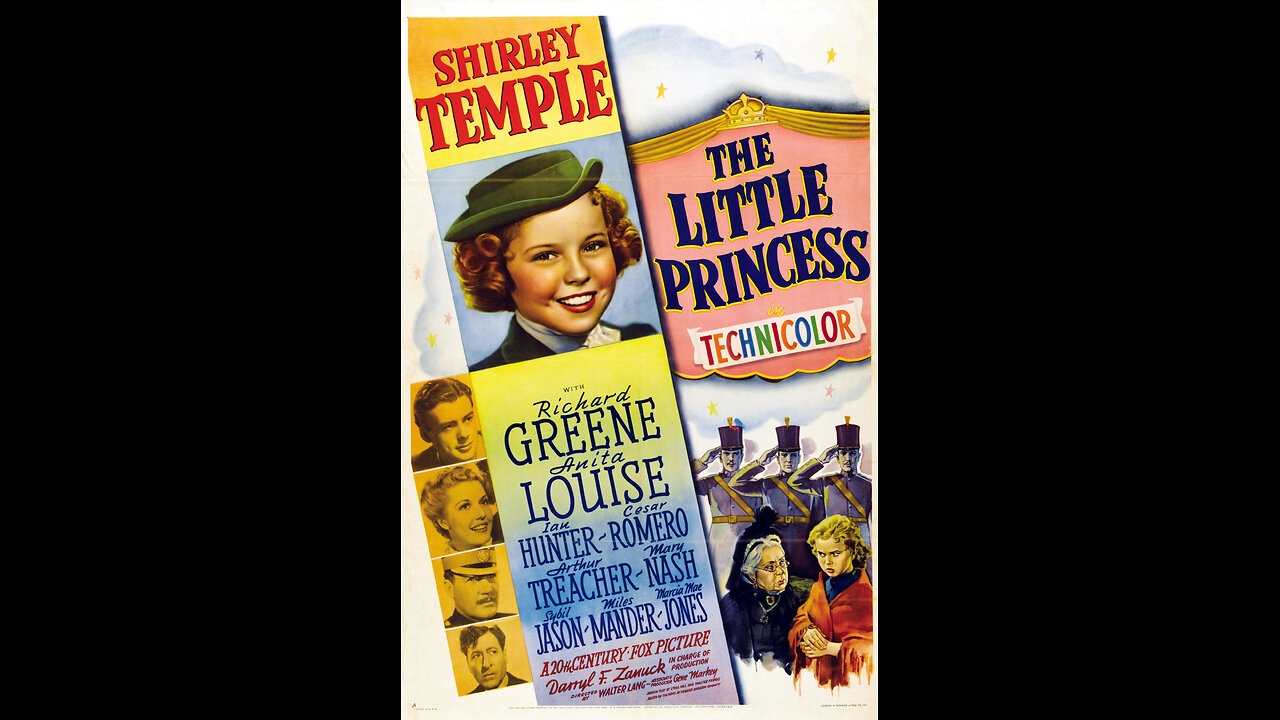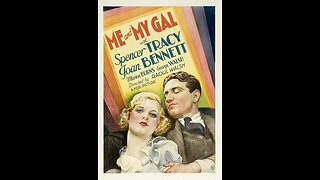Premium Only Content

The Little Princess (1939) | Directed by Walter Lang
"The Little Princess" is a classic family drama directed by Walter Lang and based on Frances Hodgson Burnett's novel of the same name. The film follows the story of Sara Crewe (Shirley Temple), a young girl sent to a boarding school while her father, Captain Crewe (Ian Hunter), goes off to fight in the Boer War. Despite her initial wealth and status, Sara faces adversity when her father is reported missing, and she is relegated to a life of servitude by the cruel headmistress Miss Minchin (Mary Nash).
Shirley Temple's Performance:
Shirley Temple's portrayal of Sara Crewe is the heart and soul of "The Little Princess." Her innocence, charm, and expressive acting make her a captivating presence on screen. Temple's ability to convey both the joy of youth and the sorrow of adversity adds depth to the film, making it a memorable and emotionally resonant experience.
Visuals and Set Design:
The film's visual style is a testament to the grandeur of Hollywood productions in the late 1930s. The lavish set designs, ornate costumes, and attention to detail transport audiences to the Victorian era. The contrast between Sara's opulent early life and the stark conditions of her later servitude is visually striking and serves the narrative effectively.
Emotional Resonance and Themes:
"The Little Princess" explores themes of resilience, kindness, and the power of imagination. The film emphasizes the importance of maintaining one's dignity and compassion in the face of adversity. Sara's unwavering belief in the power of storytelling and her ability to find joy in the simplest things contribute to the film's emotional resonance.
Supporting Cast:
The supporting cast, including Arthur Treacher as Bertie Minchin, Cesar Romero as Ram Dass, and Mary Nash as Miss Minchin, adds depth to the film. Each character plays a crucial role in Sara's journey, either as an antagonist or a source of support. The ensemble cast's performances contribute to the overall charm of the narrative.
Adaptation and Faithfulness:
While the film takes creative liberties with the source material, it remains faithful to the spirit of Frances Hodgson Burnett's novel. The adaptation captures the essence of Sara's character and the central themes of the story, translating them into a cinematic experience that resonates with audiences of all ages.
Musical Score:
The musical score, composed by Louis Silvers, complements the film's emotional beats. The use of music enhances key moments, creating a cinematic atmosphere that heightens the emotional impact of the narrative. The songs, including Shirley Temple's performances, contribute to the film's timeless charm.
Direction and Pacing:
Walter Lang's direction maintains a balanced pace, allowing the narrative to unfold organically. The film seamlessly transitions between moments of joy and sorrow, creating a dynamic storytelling rhythm. Lang's direction captures the emotional nuances of the characters and the overarching themes of the narrative.
Legacy and Cultural Impact:
"The Little Princess" has endured as a beloved classic over the decades. Shirley Temple's iconic performance and the film's timeless themes have contributed to its lasting cultural impact. It remains a cherished family film that continues to be enjoyed by new generations of viewers.
Conclusion:
"The Little Princess" is a heartwarming and visually enchanting film that showcases Shirley Temple's talent and charisma. With its timeless themes, memorable performances, and a sense of magic, the movie has secured its place as a classic in the annals of family cinema. It remains a testament to the enduring power of storytelling and the resilience of the human spirit, making it a must-watch for audiences of all ages.
-
 1:19:53
1:19:53
Classic Films & Movies Archive
9 days agoMe and My Gal (1932) | Directed by Raoul Walsh
3211 -
 LIVE
LIVE
Lofi Girl
3 years agolofi hip hop radio 📚 - beats to relax/study to
415 watching -
 LIVE
LIVE
BBQPenguin_
1 hour agoEscape From Tarkov 1.0 Wipe! New Story & Full Release!
41 watching -
 LIVE
LIVE
Midnight In The Mountains™
11 minutes agoMorning Coffee w/ Midnight & The Early Birds of Rumble
112 watching -
 24:21
24:21
a12cat34dog
1 day agoGUITAR HERO AT DREAMHACK | HALLOWEEN 2025
12.7K8 -
 LIVE
LIVE
B2ZGaming
7 hours agoB2Z.... Assemble! | B2Z Gaming
87 watching -
 LIVE
LIVE
Joe Donuts Live
32 minutes agoWill Ferrell Movie Rankings + The Impossible Quiz Challenge
55 watching -

GritsGG
12 hours ago#1 Most Warzone Wins 4000+!
54.1K -
 21:37
21:37
Forrest Galante
1 day ago6 Deadly Sea Monsters That Actually Exist
154K10 -
 30:29
30:29
Robbi On The Record
13 hours ago $12.56 earnedWhales Are Selling. Banks Are Nervous. Bitcoin analysis ft Simply Bitcoin Tv
29.1K9